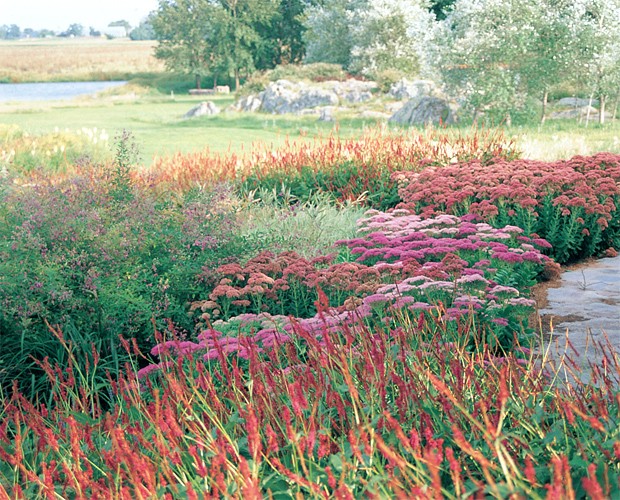Tokyo‘s skyline is a diverse jumble of modern architecture, from soaring shards of glass to eccentric 1970s living capsules. Ashley Rawlings picks 10 of the most distinctive buildings.
• As featured in our Tokyo city guide

Ashley Rawlings
Reversible Destiny Lofts
«We have decided not to die,» declared architects Shusaku Arakawa and Madeleine Gins in the title of the book they published in 1997, arguing that lopsided, physically challenging spaces would awaken residents’ instincts and allow them to live better, longer – even forever. Head out to Tokyo‘s leafy suburb of Mitaka and see their rainbow-coloured.
REVERSIBLE DESTINY LOFTS – MITAKA (IN MEMORY OF HELEN KELLER)
St Mary’s Cathedral
Kenzo Tange has built many impressive buildings in Tokyo, but St Mary’s Cathedral is arguably his finest work. Built in 1964, it is a soaring vision of stainless-steel-clad abstraction. Seen from the air, the apex of its roof forms a cross made of glass. The interior is equally dramatic: a cavern of sloping walls at times lit up in red or blue.
Prada flagship store
Tokyo’s Omotesando boulevard is a stunning catwalk for high-end contemporary fashion and dramatic architecture. Just when you think the setting can’t get any more impressive, the Prada flagship store manages to make its neighbours look like they’re trying too hard. Built in 2003 by Herzog and DeMeuron (renowned for the the bird’s nest Olympic Stadium in Beijing; their extension to London’s Tate Modern art gallery will open in time for this year’s Olympics), the Prada store is an irregular construction of green, diamond-shaped glass panels.

Nakagin Capsule Tower
Completed in 1972 by Kisho Kurokawa, this eccentric residential/office building – which looks like a stack of washing machines – is an icon of the postwar Metabolist movement. The cramped capsules were originally designed for single businessmen, and each unit contains a built-in shower, bed, TV and phone. These were supposed to be replaced every 25 years, but never were, so the building is now in a sorry state of disrepair.
Fumiko Hayashi Memorial Hall
With the widespread firebombing of Tokyo in 1945 and the postwar reconstruction, there’s not a lot of traditional architecture left to see in the city – with one great exception. In 1941, novelist Fumiko Hayashi (1903–1951) built her home here in Edo-era architectural style. Now a museum, this elegant house displays artefacts relating to her life and work, and the tranquil, walled garden where Hayashi wrote her acclaimed novels Ukigumo and Meshi.

21_21 Design Sight
In the park behind the high-end Tokyo Midtown shopping centre, two sleek, triangular shards of concrete and glass rise from the ground. 21_21 Design Sight is a signature work by Tadao Ando, and Japan‘s first design museum. Once you venture beyond the trapezoid lobby, you discover that 70% of the building is underground, but the exhibits still look great thanks to a large light-well and clever spotlighting.
Reiyukai Shakaden Temple
Nothing looms more ominously on the Tokyo skyline than this dark, oblique pyramid clad in black granite and crowned by two rings of gold. Inside, the gloomy, red-felt-lined elevators seem better suited to a David Lynch movie than a temple. Reiyukai Shakaden was built in 1925 for a Buddhist lay sect and houses a large meditation room with a giant Buddha statue. But visitors are welcome, and free Japanese lessons are on offer.
Golden Gai Bar District
This compact cluster of more than 200 tiny, ramshackle bars in Shinjuku is the antithesis of planned, efficient architecture. In the 1950s it was a den of black-market trade and vice, but later became a hangout for artists and intellectuals. The chaotic street scenes in Ridley Scott‘s Bladerunner were apparently inspired by this dingy Tokyo district. Each bar has its own theme, ranging from photography to horse racing.
Yuzo Saeki’s Studio
Yuzo Saeki (1898-1928) was one of Japan’s early adopters of western-style oil painting. Late in life, he spent several years in Paris, where he painted self-portraits and landscapes in the Fauvist style. His studio, nestled in a small park in Mejiro, is a very rare find in Tokyo. This intimate, wooden building – reminiscent of an American parish chapel – is flooded with natural light that pours in through a large set of windows at one end, while at the other there’s a quirky, irregular row of three doors.
 Sonorium
Sonorium
The lopsided white block of Jun Aoki‘s Sonorium rises up from behind the dark, tiled roofs of a residential street in Eifukucho. The intimate concert hall is a serene place to be on an overcast or rainy day: the sloping walls punctuated by two rectangular windows which become gleaming expanses of bright white.
For more information go to the Japan National Tourism Organisation’s website: jnto.go.jp/eng
• Ashley Rawlings is the editor of Art Space Tokyo, a guide to the city’s most architecturally distinctive museums and galleries
vía 10 of Tokyo’s best works of architecture | Travel | guardian.co.uk.




Debe estar conectado para enviar un comentario.